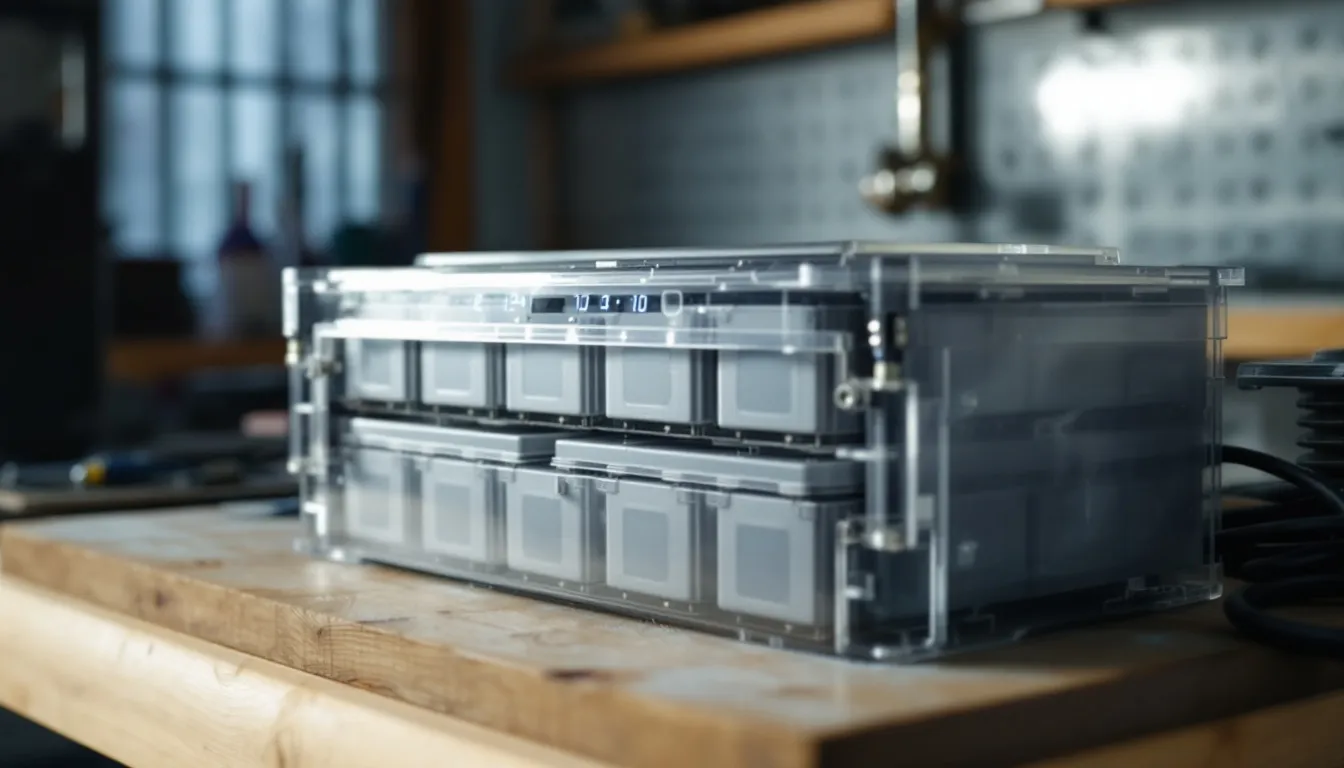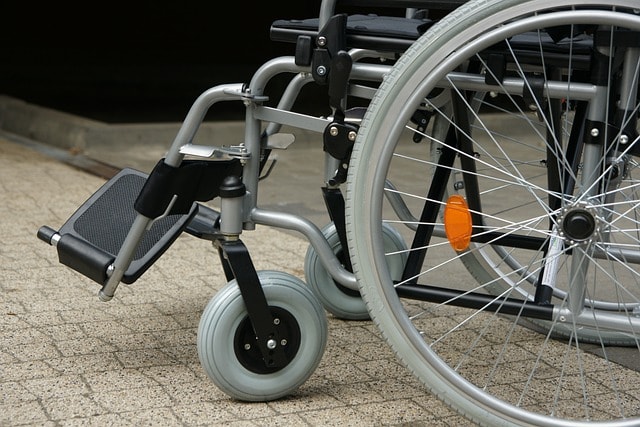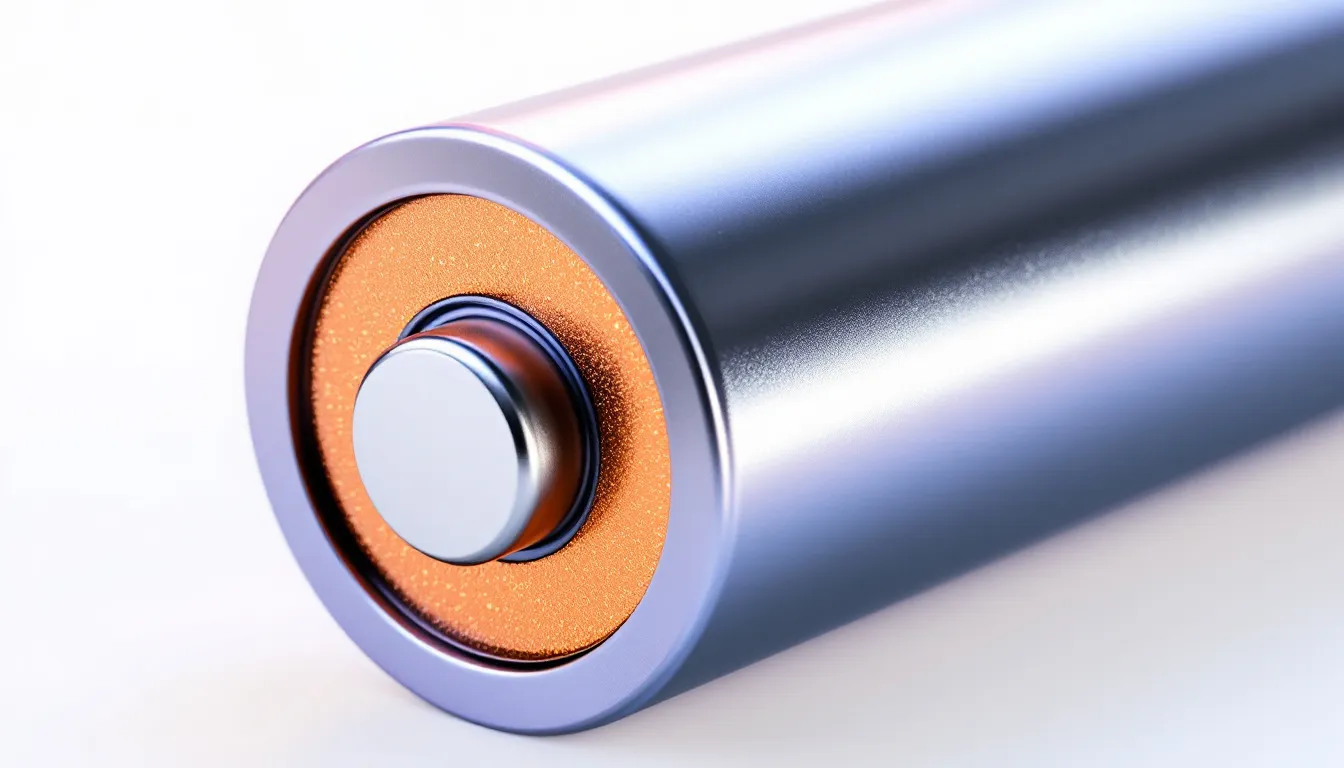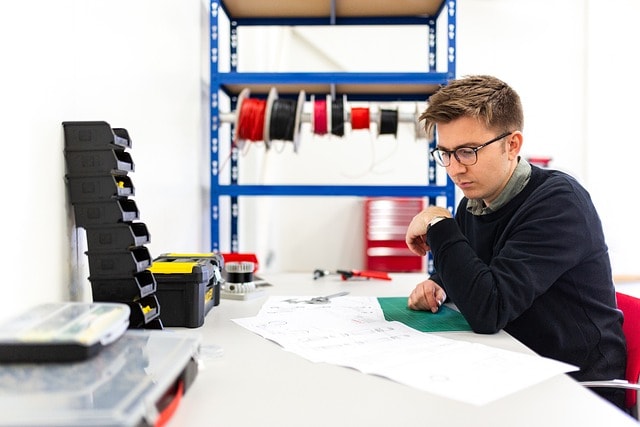Contents
- Introduction to Electric Wheelchairs
- Key Takeaways
- Understanding Electric Wheelchair Batteries
- Power Wheelchair Benefits and Features
- Lead-Acid Batteries: The Traditional Choice
- Lithium-Ion Batteries: Modern Powerhouses
- Absorbent Glass Mat (AGM) Batteries
- Gel Cell Batteries: Enhanced Safety and Durability
- Comparing Battery Lifespan and Performance
- Factors Affecting Battery Life
- Maintenance Tips for Prolonging Battery Life
- How to Choose the Right Battery for Your Needs
- User Needs and Preferences
- Safety Considerations for Electric Wheelchair Batteries
- Charging Solutions and Best Practices
- Service and Repair Options
- Innovations in Electric Wheelchair Battery Technology
- Summary
- Frequently Asked Questions
Choosing the right electric wheelchair battery types is essential for optimal performance and reliability. In this article, we explore lead-acid, lithium-ion, AGM, and gel cell batteries to help you make the best choice for your needs. Many companies in the electric wheelchair industry, particularly those located in china, were born out of a desire to enhance customer experience and solve real-world challenges in rehabilitation. Effective distribution channels play a crucial role in making electric wheelchair batteries accessible to consumers, thereby enhancing market presence and customer service capabilities.
Introduction to Electric Wheelchairs

Electric wheelchairs, also known as power wheelchairs, are designed to provide mobility and independence for individuals with complex rehab technology needs. These advanced mobility solutions are equipped with features that ensure safety and comfort, making them indispensable for users who require reliable and efficient support. Unlike manual wheelchairs, electric wheelchairs offer powered movement, reducing the physical strain on users and enhancing their ability to navigate various environments.
Electric wheelchairs also support users in a home environment, enhancing their independence and convenience.
The industry has seen significant growth in recent years, with numerous brands offering a diverse range of electric wheelchairs and services to support users worldwide. From lightweight, foldable models to robust, all-terrain options, there is a power wheelchair to fit every lifestyle and need. These wheelchairs are not only used for daily mobility but also play a crucial role in rehabilitation and therapy, making them essential equipment in the medical field. As technology continues to advance, electric wheelchairs are becoming more sophisticated, offering users greater independence and improving their quality of life.
Key Takeaways
- Choosing the appropriate battery type for electric wheelchairs significantly affects user mobility and independence, with lithium-ion batteries offering superior longevity and efficiency compared to lead-acid options.
- Lead-acid batteries are cost-effective but have a limited lifespan and require longer charging times; in contrast, AGM and gel cell batteries provide maintenance-free operation and enhanced safety.
- Recent innovations in battery technology, such as regenerative braking systems, are improving efficiency and performance, leading to more reliable power solutions for electric wheelchair users.
Understanding Electric Wheelchair Batteries

The battery serves as the core of a power wheelchair, critically affecting its dependability and efficiency. The diversity in battery types provides an array of advantages. Thus, it’s essential to make an informed choice that will amplify the user experience considerably. For those transitioning from manual wheelchairs to electric ones, grasping the significance of choosing the appropriate battery is vital for enhancing their independence and mobility. Pride Mobility is the world’s leading designer and manufacturer of mobility products including electric wheelchairs, committed to offering a wide range of solutions tailored to user needs.
Many electric wheelchair batteries are manufactured in China, emphasizing the country’s role in the global supply chain for medical equipment. Major manufacturers are located in the United States, Europe, and Asia, establishing a strong presence and credibility in the market.
Various technologies are employed in electric wheelchair batteries, each presenting unique characteristics. Notably, lithium-ion batteries boast a longevity ranging from 4 to 7 years—a stark improvement over lead-acid batteries that typically last just 2 to 3 years—offering fewer instances of replacement and diminished expenses over time.
When it comes down to picking out a suitable battery type for one’s lifestyle needs, factors such as durability, productivity, and capacity must be taken into account. The weight of the battery along with charging duration and energy density can exert considerable influence on daily life activities as well as satisfaction levels when using an electric wheelchair. Many electric wheelchairs are foldable, transportable, lightweight, anti-bacterial, and anti-staining, further enhancing their usability and convenience for diverse users.
Power Wheelchair Benefits and Features

Power wheelchairs offer numerous benefits, including increased independence, mobility, and comfort for users. These wheelchairs are designed with advanced features such as tilt, standing, and recline functions, providing optimal support and protection. These features are particularly beneficial for individuals with complex rehab technology needs, as they help in maintaining proper posture, reducing pressure sores, and enhancing overall comfort.
Safety is a paramount concern in the design of power wheelchairs. Many models come equipped with safety features like brakes, alarms, and anti-tip mechanisms to ensure user safety. Additionally, power wheelchairs are built to be durable and long-lasting, with some models featuring puncture-proof tires and waterproof components. This durability ensures that users can rely on their wheelchairs in various conditions, enhancing their independence and ability to participate in different activities. The unique design and features of power wheelchairs make them an ideal solution for those seeking a reliable and supportive mobility aid.
Lead-Acid Batteries: The Traditional Choice

Lead-acid batteries have consistently been used in electric wheelchairs around the world because of their more affordable upfront cost. These types of batteries offer a price-sensitive solution for customers who need to prioritize their budget. Yet, this comes with certain trade-offs.
Among the notable disadvantages of lead-acid batteries is that they are heavy and large, which can complicate the operation of an electric wheelchair. These batteries are rechargeable. Don’t last beyond 2 to 3 years and require extended charging times — typically needing between six to ten hours for complete recharge.
Despite such challenges, these batteries remain appealing due to their lower cost, ensuring that consumers still consider them an attractive initial option when selecting electric wheelchairs. This product has managed to stay relevant across various consumer brackets by being built into different models designed with affordability in mind—catering specifically to those whose primary concern revolves around budget without disregarding quality or function within this particular industry sector.
Lithium-Ion Batteries: Modern Powerhouses

The advent of lithium-ion batteries, driven by innovation, has brought about a transformative change in the electric wheelchair sector due to their reduced weight and condensed size. These advanced energy sources drive the performance and efficiency of electric wheelchairs by extending greater operational duration and possessing an increased capacity for storing energy, making them highly attractive to consumers. The quick rechargeability, requiring only 2 to 4 hours for a full charge, enhances their appeal among individuals who maintain an active lifestyle. Shoprider was the first wheelchair manufacturer to use powerful, lightweight lithium batteries for the power chair models, setting a benchmark in the industry.
With lifespans that span from four to seven years, these batteries offer substantial benefits by decreasing the necessity for frequent replacements while simultaneously delivering superior energy utilization. They can reach up to 95% efficiency unlike lead-acid counterparts. Such enduring performance permits users extended use between charging sessions, which in turn augments their autonomy and ease of movement.
Recent breakthroughs have steered the shift away from traditional lead-acid towards lithium-ion batteries within this industry—movement propelled by their unmatched efficacy and dependability. Taking into consideration these advancements is crucial as they hold potential implications on everyday life, along with heightened contentment associated with your mobility equipment.
Absorbent Glass Mat (AGM) Batteries
Electric wheelchair users can enjoy the advantages of AGM batteries, which are a type of maintenance-free battery. They incorporate a fiberglass mat that soaks up the electrolyte, making them spill-proof and enabling safe operation in different orientations. This configuration renders them a dependable and secure option for numerous individuals. Ensuring compliance with industry standards is crucial, as it ensures the efficient and reliable performance of AGM batteries.
AGG batteries demonstrate reduced susceptibility to sulfate accumulation—a factor that enhances their cycle life relative to traditional flooded batteries. The combination of being free from upkeep and designed against spills positions these batteries as an attractive choice for those seeking a trouble-free power source solution that can fit various user needs .
Gel Cell Batteries: Enhanced Safety and Durability
Renowned for their superior safety and longevity, gel cell batteries are a top selection for powering electric wheelchairs. These batteries employ a gelled electrolyte that prevents spills, increasing the level of safety across diverse settings. The robustness against vibration and temperature fluctuations bolsters their dependability. Finding the best battery solutions, like gel cell batteries, can significantly enhance user safety and reliability.
Beyond the aspect of safety, gel cell batteries offer consistent performance in varied climatic conditions, ensuring they remain reliable in both warmth and cold. They possess the capability to be depleted down to 90% without experiencing diminished efficiency—a characteristic not shared by numerous other battery categories—affording them resilience and adaptability beneficial to many users.
Comparing Battery Lifespan and Performance
Evaluating the longevity and effectiveness of various battery models is key to selecting wisely. Lead-acid batteries are economical, but typically last only 2 to 3 years, or around 300 to 500 charging cycles. Conversely, gel cell batteries often outlast AGM varieties in terms of lifespan, offering a more robust solution for powering mobility aids.
Lithium-ion options distinguish themselves with an approximate energy efficiency rate of 95%, which overshadows the lead-acid battery efficiency that ranges from just 65 to 80%. This higher level of energy conservation means extended operating periods between charges and less frequent need for replacements over time, thus proving economically advantageous eventually. Gel cell variants benefit from their dense electrolytic makeup that endows them with sustained operational capacity even after substantial discharges without succumbing easily to damage.
It’s imperative when choosing a power source for an electric wheelchair not only to evaluate performance metrics but also environmental conditions since extreme temperatures can drastically curtail its usable life. Similarly important is acknowledging how weight influences wear on the battery. Heavier loads expedite degradation as they exert additional strain during use over time.
Factors Affecting Battery Life
The longevity of an electric wheelchair battery is affected by various elements. To delay the degradation and avoid premature necessity for replacement, it’s advised to keep the discharge level above 20%. You should refrain from letting the battery completely deplete before charging again as this practice can shorten its life expectancy.
To ensure that your battery remains in peak condition, charge it regularly or when needed based on how much you use your wheelchair. It’s important not to overcharge the battery since doing so could diminish its efficacy. Adhering to recommended charging routines is thus crucial.
Environments with elevated levels of humidity and heat can haveten wear on lead-acid batteries. In contrast, lithium-ion batteries are crafted with a tolerance for such climates and often exhibit superior performance. For AGM batteries known for their minimal self-discharge rates, there’s less need to charge them frequently if you plan on storing them over extended periods.
Maintenance Tips for Prolonging Battery Life
Proper care and upkeep are essential to extend the durability and efficiency of power wheelchair batteries. It’s important to steer clear of both overcharging and excessively draining the battery as this helps in preserving its longevity. Conducting routine inspections can help detect issues such as worn cables or abnormal sounds, which is crucial for maintaining the functionality of your device.
The specific preservation needs differ depending on the type of battery used in a power wheelchair. Lead-acid batteries require frequent monitoring along with periodic topping up of electrolytes, whereas lithium-ion and AGM (Absorbent Glass Mat) batteries have been crafted for minimal maintenance requirements while potentially providing an extended service life compared to traditional lead-acid variants. Charging your electric wheelchair’s battery every night aids in sustaining optimal performance levels and prolonging its usable life.
It’s also recommended to use only the manufacturer-provided charger tailored for your particular wheelchair model. This helps prevent any potential harm to the battery system. Keeping moisture away from your power wheelchair ensures no accidental damage occurs due to these elements getting wet, plus storing it within a temperature-regulated setting shields both its battery(s) and electronic systems against harsh environmental conditions that could negatively impact their operation.
How to Choose the Right Battery for Your Needs

Selecting an appropriate battery for an electric wheelchair requires thoughtful reflection on the user’s particular lifestyle and routine activities. The choice of battery type is heavily influenced by mobility requirements, such as the variety of terrains navigated and distances covered. Lithium-ion batteries tend to be more lightweight and compact, facilitating easier management than their heavier lead-acid counterparts.
The cost also has a significant impact when deciding upon a battery, with lead-acid options emerging as the most budget-friendly alternative. It’s essential to consider how heavy the battery is since lighter ones can improve a wheelchair’s maneuverability.
Manufacturers are committed to providing the best battery solutions to meet diverse user needs. By taking these elements into account, users can identify a suitable battery that aligns with their needs, thereby enhancing their ability to move around while minimizing the need for frequent replacements.
User Needs and Preferences
When choosing a power wheelchair, it is essential to consider the user’s needs and preferences, including their lifestyle, mobility requirements, and personal desires. Each user has unique needs that must be addressed to ensure comfort and support. For instance, some users may require specific features such as a certain seat height or width to accommodate their body size and shape.
Preferences also play a significant role in the selection process. Some users may have a preference for a particular brand or model, while others may prioritize factors such as durability, safety, and ease of use. The team at wheelchair manufacturers and distributors work closely with customers to understand their needs and provide tailored solutions. By considering these individual requirements, manufacturers can design and build power wheelchairs that cater to specific needs, providing optimal support and mobility. This personalized approach ensures that users receive a product that enhances their quality of life and meets their daily mobility demands.
Safety Considerations for Electric Wheelchair Batteries
Ensuring safety is essential while handling electric wheelchair batteries. It’s imperative to switch off the power wheelchair before entering or exiting to avoid unintentional motions that might lead to harm. One should refrain from placing pressure on the armrests and footplates of the chair since they are not built to bear substantial weight, which could result in damage or personal injury.
During outdoor use of a power wheelchair, it is important to be vigilant on irregular surfaces in order to sustain control and circumvent potential risks, particularly when traversing inclined ground. Keeping tires properly inflated contributes significantly towards a stable ride. Hence regular inspection and maintenance of tire pressure is advised.
Charging Solutions and Best Practices
Maintaining the operational longevity of electric wheelchair batteries is highly dependent on proper charging solutions. Full recharges for lead-acid batteries typically necessitate a span of 6 to 10 hours, while lithium-ion alternatives achieve full capacity within just 2 to 4 hours. For those seeking quicker turnaround times, AGM batteries offer expedited charging capabilities compared with their traditional flooded counterparts, which is particularly beneficial for users who rely on their wheelchairs regularly. Following a step-by-step process for optimal battery maintenance is crucial for ensuring longevity and performance.
To ensure optimal battery health, adhering to specific charging practices is key.
- Recharging should occur after every use by individuals who utilize their wheelchairs daily.
- Occasional wheelchair users must engage in routine recharging sessions to avert potential deterioration of the battery’s condition.
- Prioritizing an initial charge period extending no less than 18 hours prepares the battery for superior functioning from day one.
- Post-initial usage suggests establishing a consistent pattern involving regular recharge cycles that last approximately twelve hours each time.
For peak power readiness, it’s advantageous to adopt nightly recharging habits for your wheelchair’s battery. Caution against such practice under extreme temperature conditions — below freezing (10°C) or excessive heat (above 30°C). Integrating any unsuitable accessories or chargers not expressly designed to align with your specific model can precipitate disruptions and pose risks of impairing your device.
Service and Repair Options
Regular maintenance and repair are crucial to ensure the longevity and performance of power wheelchairs. Many manufacturers and distributors offer comprehensive service and repair options, including on-site repairs, to minimize downtime and inconvenience for users. These services are essential for maintaining the functionality and reliability of the wheelchair, ensuring that users can continue to enjoy their independence and mobility.
In addition to repair services, some companies provide lift and equipment installation services to support users with complex rehab technology needs. The request for service and repair can be made through email, phone, or online portals, making it convenient for users to access support. By offering these comprehensive service and repair options, manufacturers and distributors can ensure that power wheelchairs continue to meet the needs of users, providing independence and mobility for years to come. This commitment to customer support helps in maintaining the trust and satisfaction of users, ensuring they have reliable assistance whenever needed.
Innovations in Electric Wheelchair Battery Technology
Innovative solutions are being employed to boost the efficiency and performance of electric wheelchair batteries, with particular emphasis on augmenting complex rehab technology. For instance, regenerative braking systems reclaim energy while slowing down, thereby propelling battery efficiency forward. These advancements not only extend the life of batteries, but also improve user experience by enabling longer travel distances and reducing the need for frequent charging. The team at Quantum Rehab manufactures consumer-inspired, industry-leading power wheelchairs to increase medical comfort and daily functionality, further advancing the field of mobility solutions. Leading manufacturers like Quantum Rehab, based in Pennsylvania, are driving innovations in electric wheelchair battery technology.
These technological strides are revolutionizing the realm of electric wheelchair power sources, providing users with more dependable and effective power options. As these technologies advance, we anticipate continued enhancements in both battery function and overall satisfaction for users.
Summary
To sum up, selecting an appropriate battery for your electric wheelchair is crucial to maintain dependable operation and improve your mobility experience. Today, there are various options available, from the classic lead-acid batteries to contemporary lithium-ion variants, each with their distinct advantages and drawbacks. By understanding their respective lifespans, performance levels, and upkeep demands, individuals can choose a solution that aligns perfectly with their personal requirements.
As progress in technology marches on, we anticipate even more ground-breaking developments designed to boost both efficiency and dependability of batteries used in electric wheelchairs. Users who keep abreast of these advancements driven by technology while adhering to recommended practices will likely see enhanced longevity and function from their wheelchair’s power source—thereby increasing autonomy and elevating overall life satisfaction.
Frequently Asked Questions
How long do lithium-ion batteries last in electric wheelchairs?
Lithium-ion batteries in electric wheelchairs, recognized around the world, typically have a lifespan of 4 to 7 years, offering a substantial improvement over lead-acid batteries, which usually last only 2 to 3 years.
What are the benefits of AGM batteries for electric wheelchairs?
Electric wheelchairs benefit from the use of AGM batteries, which require no maintenance and are designed to prevent leaks. Their longer lifecycle is attributed to their ability to resist sulfate accumulation.
Such attributes increase both dependability and durability, thus making AGM batteries a superior selection for devices that aid in mobility.
How often should I charge my electric wheelchair’s battery?
You should charge your electric wheelchair’s battery nightly to ensure you have maximum power available for daily use. This practice not only maintains optimal performance but also helps prolong the life of the battery.
What safety precautions should I take when using a power wheelchair?
For safe operation of a power wheelchair, it is crucial to switch off the unit whenever you are getting in or out. Also, be careful not to apply pressure on the armrests and footplates.
When operating a power wheelchair, one must also be vigilant while traversing irregular ground surfaces.
What are the latest innovations in electric wheelchair battery technology?
The latest innovations in electric wheelchair battery technology include regenerative braking systems that improve battery efficiency by capturing energy during deceleration. This enhances the overall performance of electric wheelchairs, making them more efficient and sustainable.
The word ‘Hoveround’ was creatively derived by combining ‘hover’ with elements of popular culture, illustrating the brand’s innovative spirit.





